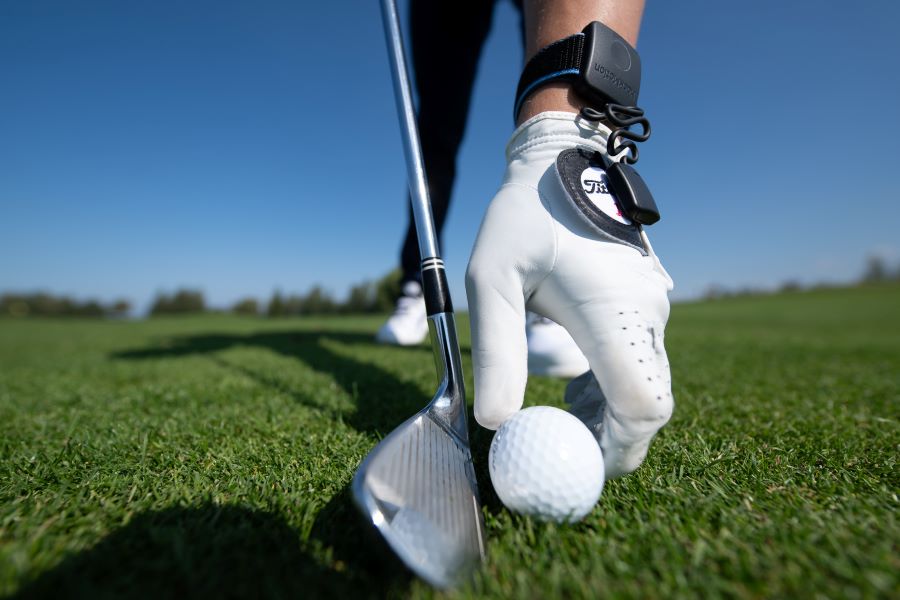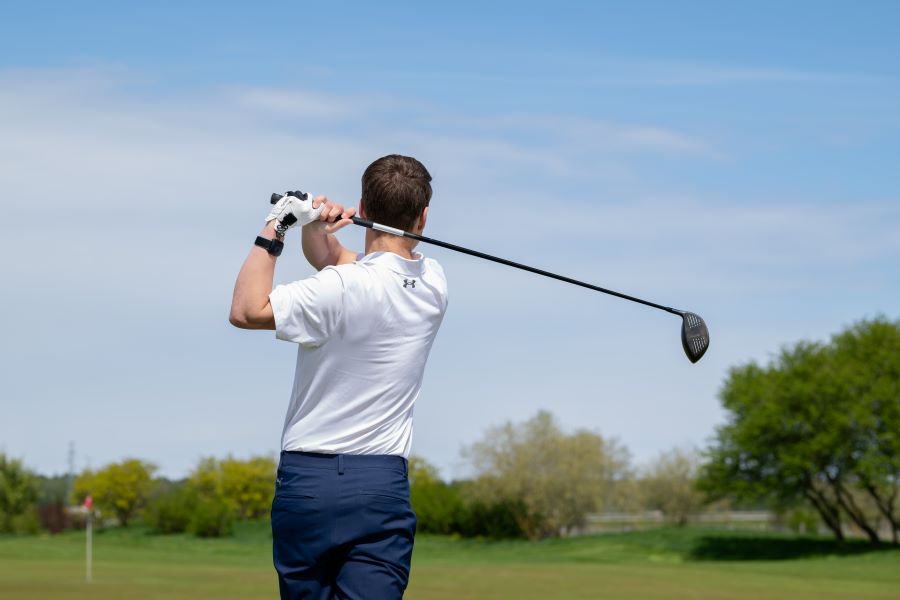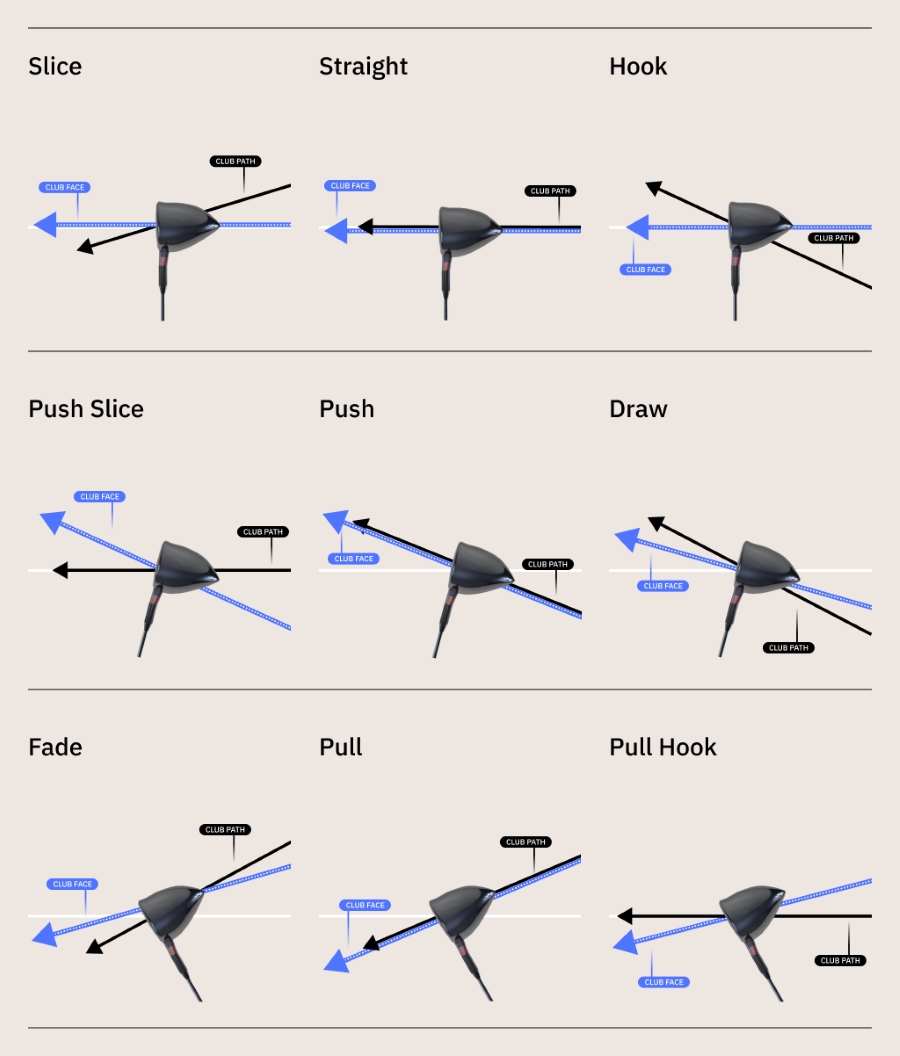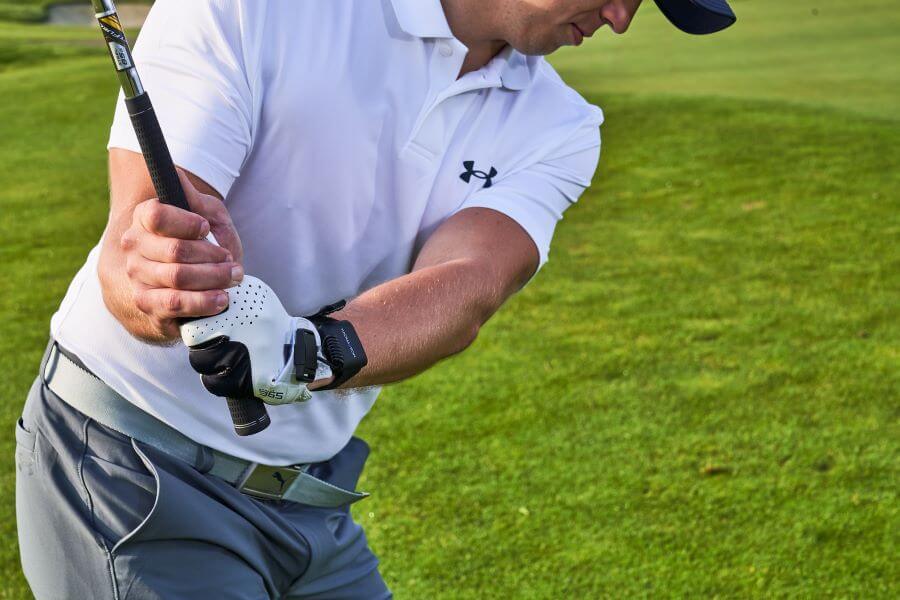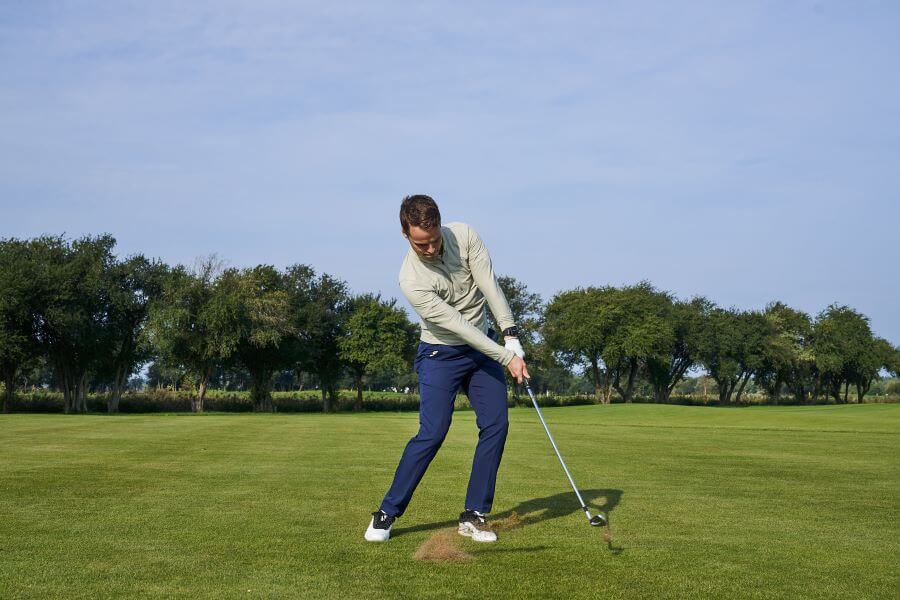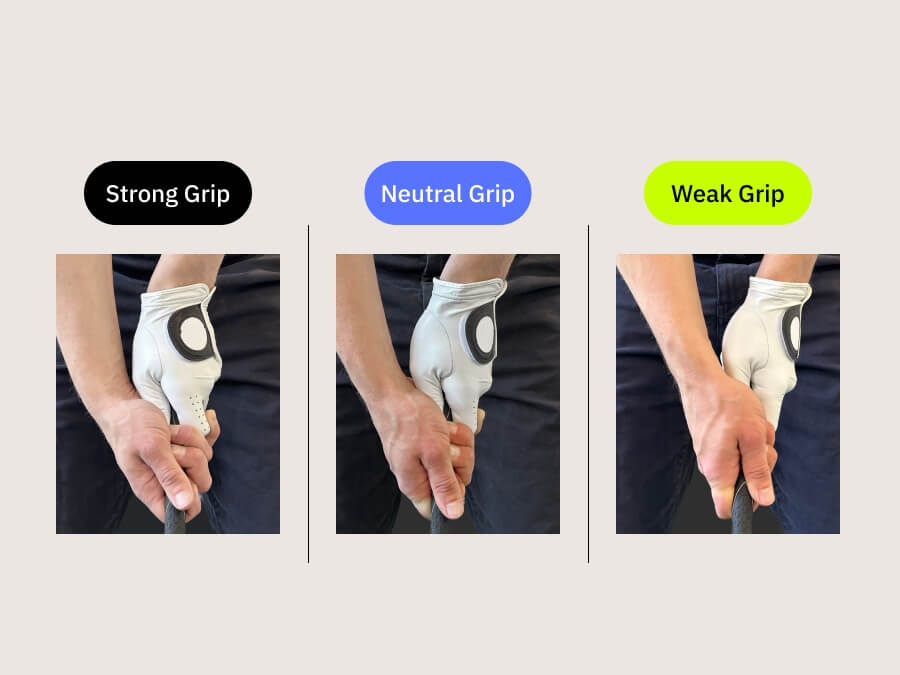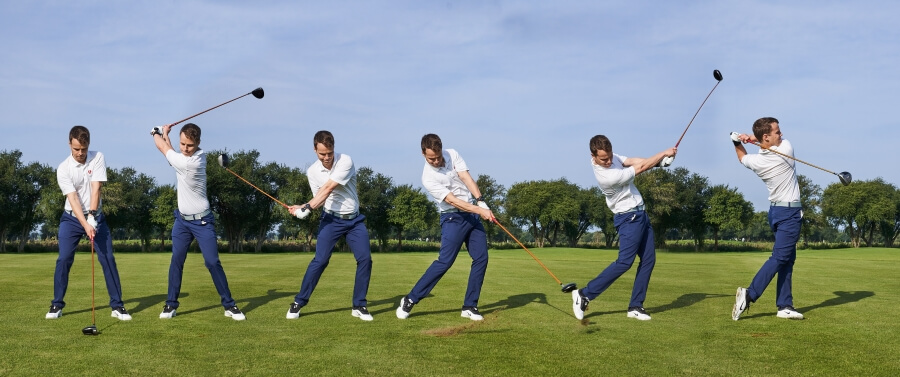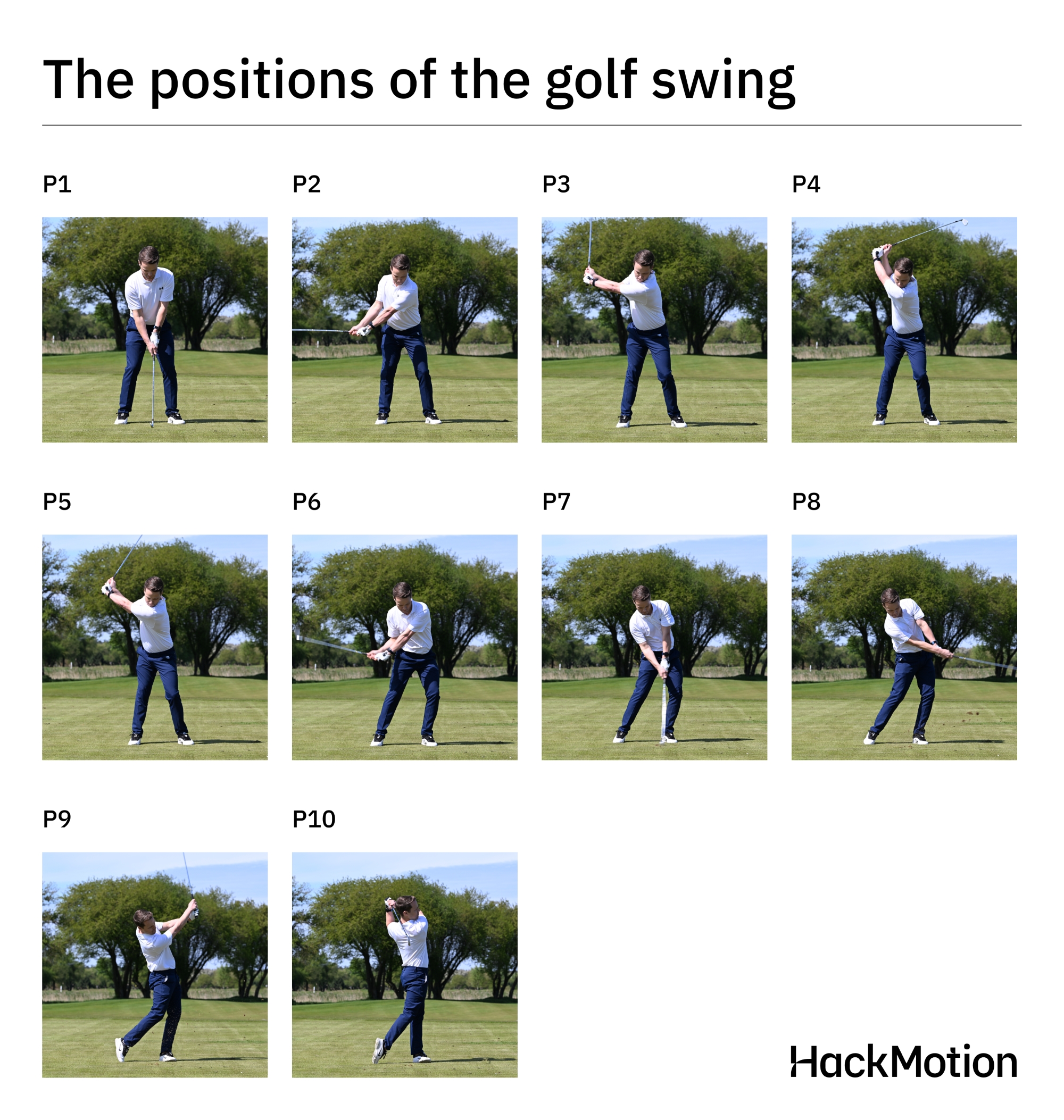Understanding & Creating Lag in Your Golf Swing (And How to Improve Yours)
Lag is a critical element in the transition from backswing to downswing and significantly impacts your ability to compress the ball and gain extra yardage.
After analyzing over 1,000,000 golf swings using HackMotion, we’ve uncovered valuable insights into how wrist action contributes to creating lag.
If adding lag and improving your ball striking are your goals, these tips and drills will set you on the right path.
Creating Lag in The Golf Swing (Key Takeaways)
If you don’t have time to read our guide on understanding lag, here are the most important things to remember.
- Lag requires proper sequencing: pressure into the lead foot, unwinding hips, chest rotation, and a shallowing club.
- Avoid excessive cupping (extension) in the lead wrist to prevent an open clubface and ineffective lag.
- Adding radial deviation (wrist hinge) during the downswing is ineffective for increasing lag in the golf swing.
- Body rotation during the downswing is essential for maintaining lag and ensuring a powerful, controlled impact.
- HackMotion provides real-time feedback and drills on wrist angles to improve lag control and swing performance.
Contents
What Do I Need to Understand to Create Lag?
Lag refers to the angle between the lead forearm and the club shaft during the downswing. For amateurs, it feels like the club trails behind the hands through impact.
Maintaining this lag allows for a whip-like action in the clubhead, leading to increased clubhead speed and greater distance.
Proper lag also contributes to better timing and sequencing of the swing, ensuring a more efficient transfer of energy to the ball at impact.
The Common Myth that Exists about Lag in Golf
Lag is not about aggressively increasing wrist hinge (the ‘Sergio Garcia’ myth).
Instead, it’s about sequencing: allowing the club head to fall behind the hands naturally as you shallow the club.
Many times, when we see faces in pictures or videos of Sergio or any other professional on the downswing, they seem to increase their wrist hinge or radial deviation. This is an illusion. From a down-the-line view, they shallow the club with proper sequencing.
Professionals very rarely increase the wrist angle, or their radial deviation, on the downswing.
How to Create Lag in the Golf Swing
It is crucial to understand wrist movements and their role in creating lag.
To improve lag, you must ensure that your wrists are in the right position and that you approach the golf ball with the lead wrist flexed.
Proper Wrist Positions to Create Lag
Wearing the HackMotion can help you become aware of your wrist positioning during the backswing. The most important wrist measurements are the extension (cupping) and flexion (bowing) of the lead wrist.
Excessive extension at any point in the swing reduces lag and opens the clubface, leading to weak shots.
Static Top Drill in HackMotion
Use the HackMotion Static Top Drill to help reduce extension in the backswing.
Static Top Drill – Step by Step
- Start at the address position.
- Swing to the top of the swing and stop.
- Check to make sure wrist angles are in the green zone (not extended).
- Start back at address and repeat 10 times.
- When successfully completed, hit some full swing shots and measure wrist angles to see if they are closer to being within range.
Hinging at the Right Time
Hinging is necessary to create lag. The wrists bend toward the thumb when adding radial deviation.
The hinge is necessary for lag, but if it is overdone or done too soon, you may unknowingly add an extension, making it difficult to square the face.
Preset Wrist Hinge Drill – Step by Step
- Start at the address position.
- Position the shaft parallel to the ground and check wrist angles. Ensure the lead wrist is flat or slightly flexed (0° of extension) and the radial deviation is around 14-15°.
- Check wrist angles: Make sure wrist angles are in the “green zone” (within the correct range of radial deviation and extension/flexion). You should hear or feel feedback if your wrist position is correct.
- Repeat 10 times: Perform the drill slowly and with control, ensuring you’re consistently in the correct wrist position.
- After completing the drill, hit a few full shots while focusing on not exaggerating the wrist hinge and letting it occur more naturally.
Reduce Extension on the Downswing
As part of the transition from backswing to downswing, it is important to move the wrist from an extended position to a flexed position.
When your wrist moves more to this flexed position, you can release the lag you have built up effectively at impact.
Most importantly, with a square face and a flexed lead wrist on the downswing you’ll be able to rotate the hips and allow your chest and body to unwind through the golf ball.
This is where additional power and control is added.
Motorcycle Drill – Master Wrist Flexion in the Downswing
Focus on continuously adding flexion until the club reaches parallel, then smoothly complete your swing.
Motorcycle Drill for Lag – Step by Step
- Start at the address position.
- At the top of your backswing, mimic revving a motorcycle throttle with your lead wrist.
- Transition into the downswing focusing on increased flexion in the lead wrist.
- HackMotion will track your wrist position and let you know if you are in range.
- Repeat the motion to build muscle memory.
Additional Drills to Create Lag in Golf
As we have mentioned, the best way to feel and create lag in your golf swing is by working on drills.
Drills will help with both positioning and sequencing required to create lag.
Here are three additional drills to help you create lag in your game.
One-Arm Swing Drill
The one arm swing drill is used to develop feel for lag and minimize lead wrist extension.
It’s a simple drill that you can do with or without the HackMotion.
One-Arm Swing Drill – Step by Step
- Swing with your trail arm only, focusing on how the club naturally lags behind your hand.
- Feel how your lower body has to lead from the top to get the club behind and create this lag position.
- Use HackMotion to monitor wrist extension and ensure minimal cupping in your lead wrist.
- Repeat until the motion feels natural, then add your lead hand.
HackMotion Release Drill
The HackMotion release drill helps improve wrist angles and energy transfer at impact.
This drill focuses on getting your fundamentals correct from the 9 o’clock to 3 o’clock position.
Perfect Your Release with HackMotion
Fine-tune your release for consistent contact. Start with a short swing to master control before adding power.
HackMotion Release Drill – Step by Step
- Swing back to waist height, pause, and check wrist angles using HackMotion.
- Transition through impact to waist height on the follow-through, maintaining lag and proper wrist flexion.
- Each time you do this, ensure you are in the green zone on the HackMotion app.
- Repeat ten times and focus on a flat or slightly flexed lead wrist throughout the drill.
Sequencing Drill with HackMotion
The correct sequence is essential to maximizing lag in the golf swing.
Use this sequencing drill with HackMotion to master the sequence of pressure shift, hip rotation, and wrist angles.
Sequencing Drill – Step by Step
- Take a slow backswing, pausing at the top to ensure a flat lead wrist.
- Begin your downswing, shifting pressure into the lead foot while rotating the hips.
- Monitor wrist angles with HackMotion to ensure proper lag creation.
- Repeat until the sequence feels natural.
Final Thoughts
Creating and maintaining lag in your golf swing is essential for maximizing clubhead speed, achieving powerful ball striking, and controlling your shots.
Utilizing tools like HackMotion to provide real-time feedback allows you to fine-tune your wrist angles and ensures you’re on the right path toward more consistent and controlled shots.
The key is to take advantage of real-time feedback and data to improve your fundamentals and lower your scores.





